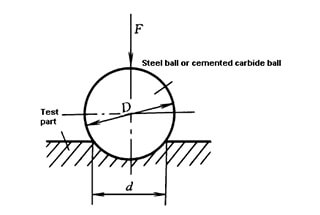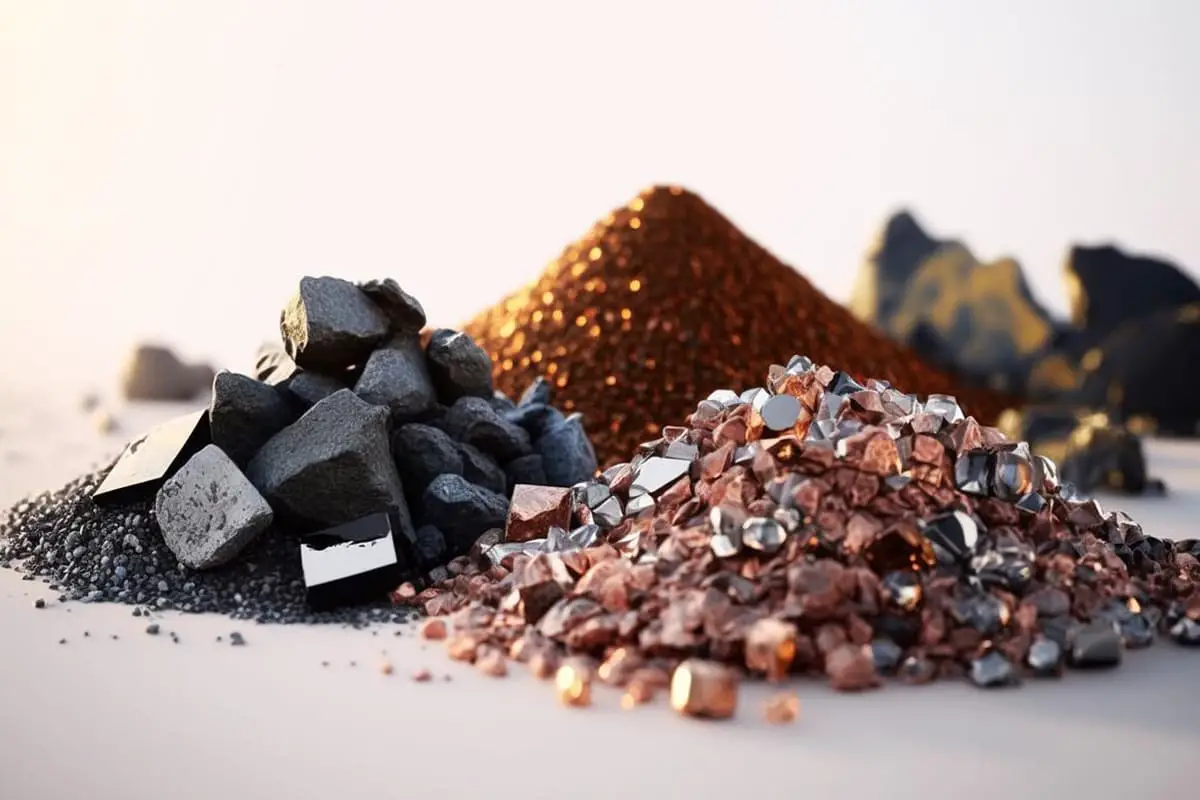
Have you ever wondered what makes bronze so special and versatile? This article explores the fascinating world of bronze, an alloy primarily made of copper mixed with elements like tin, aluminum, and silicon. We’ll uncover its unique properties, various types, and practical applications, providing insights from experienced mechanical engineers. Get ready to learn how bronze has shaped industries with its strength, elasticity, and corrosion resistance!

Bronze, an alloy primarily made of copper, has been one of the most important materials throughout human history. Its discovery marked the start of the Bronze Age, a transformative era that revolutionized tools, weapons, and various artifacts. Bronze is valued for its durability, resistance to corrosion, and ease of use.
Bronze alloys are primarily composed of copper and tin, with additional elements like aluminum, manganese, nickel, or phosphorus to enhance specific characteristics. Notable properties include:
Although both bronze and brass are copper-based alloys, they have different compositions and properties. Brass is mainly an alloy of copper and zinc, known for its malleability and excellent acoustic properties.
Bronze is used in marine hardware, bearings, and industrial machinery, while brass is common in decorative items, musical instruments, and plumbing fittings. Understanding these differences is key to selecting the right material for specific applications, ensuring the best performance and longevity.
Bronze is a versatile metallic alloy primarily composed of copper. It is formed by combining copper with one or more alloying elements, most commonly tin, but also including aluminum, beryllium, silicon, manganese, nickel, phosphorus, and occasionally zinc in small quantities. The specific composition varies depending on the desired properties and intended application.
Metallurgically, bronze encompasses a broad family of copper alloys, excluding pure copper, brass (copper-zinc alloys), and cupronickel (copper-nickel alloys). The addition of alloying elements to copper significantly enhances its mechanical and chemical properties, resulting in a material with superior characteristics compared to pure copper.
The alloying process imparts bronze with a unique combination of properties:
These attributes make bronze an invaluable material in various industries, including marine engineering, aerospace, electrical applications, and artistic endeavors. While bronze can be more challenging to process than some other metals due to its hardness and high melting point, modern manufacturing techniques such as precision casting, CNC machining, and additive manufacturing have expanded its applications and improved production efficiency.
The specific bronze composition is carefully tailored to meet the requirements of each application, balancing factors such as strength, ductility, corrosion resistance, and cost-effectiveness. This adaptability has ensured bronze’s continued relevance in both traditional and cutting-edge engineering applications.
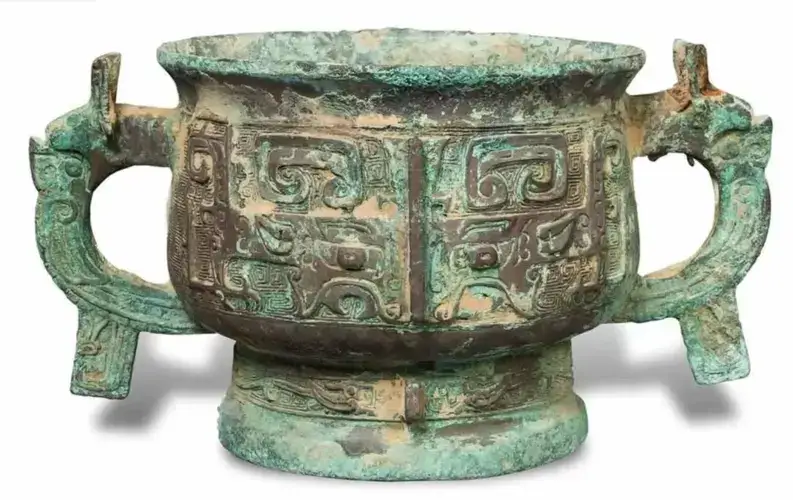
How many types of bronze exist?
Bronze can be classified into several categories based on its main elements. These include tin bronze (including tin phosphorus bronze), aluminum bronze, beryllium bronze, silicon bronze, manganese bronze, chromium bronze, cadmium bronze, zirconium bronze, chromium zirconium bronze, titanium bronze, magnesium bronze, and iron bronze, among others.

The type of copper-based alloy that has tin as its primary element is referred to as tin bronze. Tin bronze used in the industrial sector typically contains between 3% and 14% tin.
Tin bronze with less than 5% tin content is ideal for cold working processes. On the other hand, tin bronze with tin content ranging from 5% to 7% is suitable for hot working. For casting applications, tin bronze with more than 10% tin content is preferred.
Tin bronze is widely utilized in various industries, including shipbuilding, chemical, machinery, and instrumentation. It is mainly used to manufacture wear-resistant parts such as bearings, shaft sleeves, and elastic components like springs, as well as anti-corrosion and anti-magnetic parts.

The type of copper-based alloy that has aluminum as its main element is known as aluminum bronze. Aluminum bronze has higher mechanical properties compared to brass and tin bronze.
In practice, aluminum bronze contains 5% to 12% aluminum, with aluminum content between 5% and 7% providing the best plasticity, making it ideal for cold working. However, when the aluminum content is greater than 7% to 8%, the strength of the alloy increases, but its plasticity decreases significantly. Therefore, it is mostly used in cast form or after hot working.
In terms of wear resistance and corrosion resistance, aluminum bronze outperforms brass and tin bronze in atmospheric, seawater, seawater carbonic acid, and most organic acids.
Aluminum bronze can be used to manufacture high-strength wear-resistant parts like gears, shaft sleeves, and worm gears, as well as high corrosion resistance elastic elements.

The type of copper alloy that has beryllium as its primary element is referred to as beryllium bronze. The beryllium content in beryllium bronze typically ranges from 1.7% to 2.5%.
Beryllium bronze is characterized by its high elastic limit and fatigue limit, excellent wear resistance and corrosion resistance, good conductivity and thermal conductivity, non-magnetism, and the absence of sparks when impacted.
It is mainly used for the manufacture of critical springs in precision instruments, clock gears, bearings, and bushings that work under high speed and high pressure, as well as welding electrodes, explosion-proof tools, navigation compasses, and other vital components.

The type of bronze that has silicon as its main element is known as silicon bronze. In addition to silicon, silicon bronze used in the industrial sector also contains trace amounts of manganese, nickel, zinc, or other elements.
Silicon is a limited solid solution in copper, with the maximum solubility being 5.3% at 852°C, which decreases as the temperature decreases. However, the aging hardening effect is not significant, and generally, no strengthening heat treatment is performed.
The silicon content of deformable silicon bronze ranges from 1% to 4%. With an increase in silicon content, a brittle phase may appear, reducing the plasticity of the alloy.
Silicon bronze has a narrow temperature range of crystallization, good fluidity, and higher mechanical properties compared to tin bronze. It can be used as a substitute for tin bronze in the machinery manufacturing industry.

Manganese bronze is a type of alloy that has copper as its base element and manganese as its main alloying element. The main grades of manganese bronze are QMn1.5 (Cu-1.5Mn) and QMn5 (Cu-5Mn), among others.

Chrome bronze is a type of copper alloy that contains 0.4% to 1.1% chromium. Chromium bronze can be strengthened through quenching, aging, or quenching and cold deformation aging treatments.
At the eutectic temperature of 1072°C, the maximum solubility of chromium in copper is 0.65%. As the temperature decreases, the solid solubility of chromium decreases rapidly, and chromium particles are precipitated after solid solution and aging treatments.
The addition of chromium significantly improves the recrystallization temperature and thermal strength of the alloy, but slightly decreases the conductivity of copper. The conductivity of solution-treated chromium bronze rod is 45% IACS, which increases to 80% IACS after aging treatment. The softening temperature of aged chromium bronze is 400°C, which is double that of cold-worked copper.
This alloy can be used in both casting and deformation states. When aluminum and magnesium are added as alloying elements of chromium bronze, a thin, dense oxide film forms on the surface of the Cu-Cr alloy that is firmly bonded with the base metal, improving the high-temperature oxidation resistance and heat resistance of the alloy. The content of aluminum and magnesium in the alloy is usually not more than 0.3%.

Cadmium bronze is a special type of bronze that has cadmium as its main alloying element, and sometimes 0.35% to 0.65% chromium is added. Cadmium and copper form a solid solution at high temperatures, but the solid solubility decreases rapidly as the temperature decreases.
The low content of cadmium results in a weak particle strengthening effect of the precipitated phase, and therefore, the alloy cannot be age-hardened by heat treatment and can only be strengthened through cold deformation.
Cadmium bronze has high conductivity and thermal conductivity, good wear resistance, wear reduction performance, and corrosion resistance, as well as good processing performance. It is widely used in the manufacture of conductive, heat-resistant, and wear-resistant parts for electrical devices.
It is important to note that the volatile matter of cadmium is toxic, and the material must be prepared through melting methods while paying attention to safety measures during the melting process. The domestic grade of cadmium bronze is QCd1. It is available in the form of plates, strips, rods, and wire.
Its main applications include motor commutators, switch elements, spring contacts, waveguide cavities, high-strength transmission lines, joints and contact welding electrodes, and rollers, among others.

Zirconium bronze is a special type of bronze that has zirconium as its main alloying element, and sometimes a small amount of zirconium is added to improve its strength. The common grades of zirconium bronze are QZr0.2 and QZr0.4.
It has good thermal strength and creep resistance, and retains good plasticity and conductivity at high temperatures. Zirconium bronze is produced through the melting method.
It is mainly used as resistance welding parts and high-strength electrode materials. The use of zirconium bronze is becoming increasingly widespread in the iron and steel industry due to its high conductivity, thermal conductivity, and ease of processing.
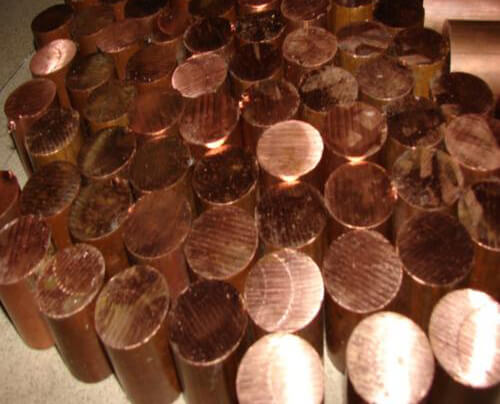
Chromium zirconium bronze is an alloy that has high strength, hardness, electrical conductivity, and thermal conductivity, as well as good wear resistance. After aging treatment, its hardness, strength, electrical conductivity, and thermal conductivity are significantly improved, making it easy to weld.
It is widely used in applications such as motor commutators, spot welding machines, seam welding machines, electrodes for butt welding machines, and other components that require strength, hardness, conductivity, and conductivity at high temperatures.
As an electric spark electrode, chromium zirconium bronze can produce an ideal mirror surface with good upright performance. It can achieve effects that are difficult to achieve with pure red copper, such as flaking, and is suitable for difficult-to-machine materials such as tungsten steel.
The grades of chromium zirconium bronze include C18150, C18200, C15000, and C15100.
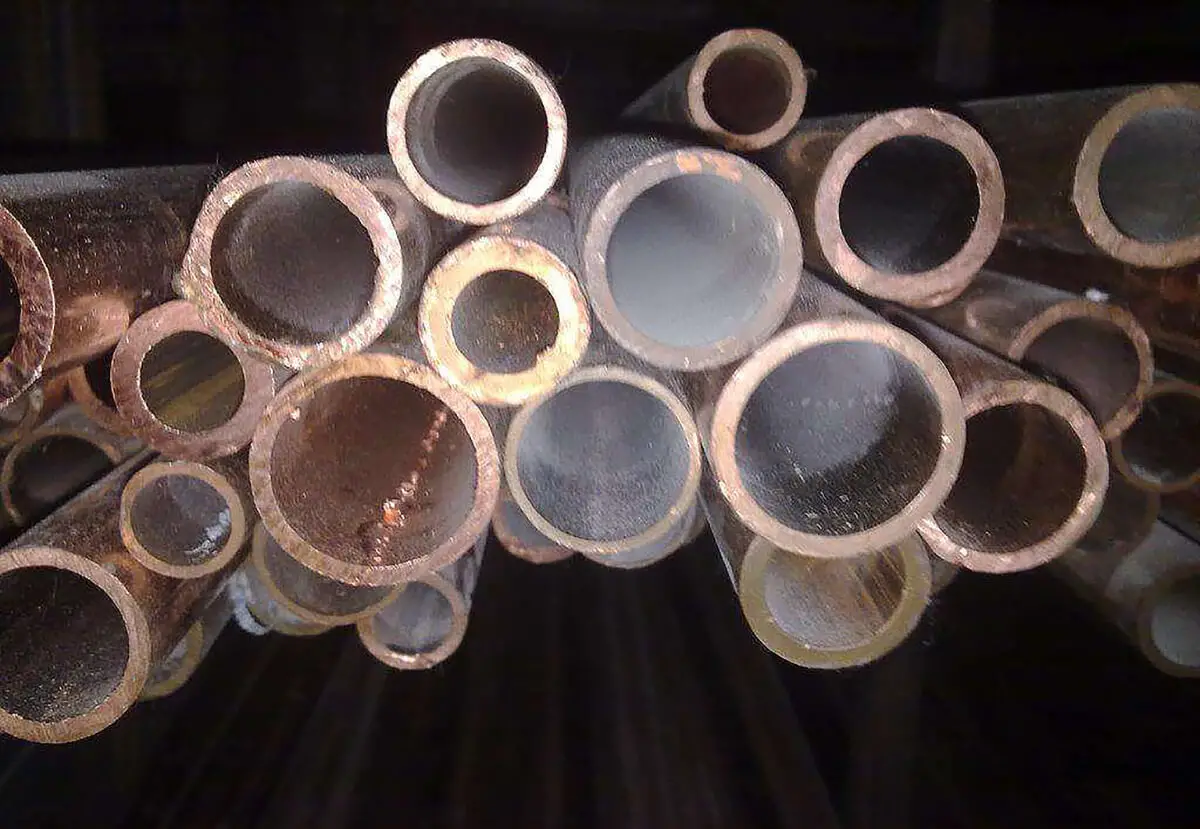
Titanium bronze refers to a copper alloy that has titanium as its main alloying element. It is a new type of elastic material that has good workability, both cold and hot. Through heat treatment, the properties of titanium bronze can be greatly improved and strengthened. For instance, its tensile strength can be increased from 686 MPa to 1009 MPa.
Titanium bronze is used in the manufacture of high-strength, high-elasticity, and high-wear-resistant elastic elements, electrical switches, relay elastic elements, membrane boxes, diaphragms, gears, bearings, bearing pads, and bearing sleeves, among other applications.

Magnesium bronze is a type of magnesium copper alloy. The domestic grade of magnesium bronze is QMg0.8. It is a binary alloy of copper and magnesium and is commonly used as a conductive material, such as cables, and can replace cadmium bronze in many applications.
Magnesium bronze is mainly supplied in the form of wire and is primarily used to manufacture conductive components such as cables and aircraft antennas.

Iron bronze is a type of bronze that has iron as its main element. Copper-iron alloys, also known as iron bronze, are represented by the C19400 alloy in America.
Through heat treatment, the precipitation of iron in the alloy improves its strength and heat resistance. The tensile strength in its hardened state can reach 415-485 MPa, and its conductivity can reach 60% IACS.
Iron bronze is widely used as a lead frame material for integrated circuits and is included in the ASTM B465-85 standard in the United States. This standard also includes the C19200, C19500, and C19600 alloys, which have iron contents of 0.8% to 12%, 10% to 20%, and 9% to 12% respectively, and phosphorus contents of 0.01% to 0.04%, 0.01% to 0.35%, and 0.25% to 0.35% respectively.
In China, the equivalent to the C19400 alloy is the QFe2.5-0.1 iron bronze.
The following information is based on data available up to October 2023.
Strengths:
Weaknesses:
Strengths:
Weaknesses:
Strengths:
Weaknesses:
Strengths:
Weaknesses:
Strengths:
Weaknesses:
Strengths:
Weaknesses:
Strengths:
Weaknesses:
Strengths:
Weaknesses:
Bronze alloys are widely used across various industries due to their exceptional properties, such as resistance to corrosion and high durability.
Bronze alloys like aluminum bronze and manganese bronze are ideal for manufacturing ship propellers, underwater fastenings, and other marine hardware. These materials provide high strength and superior wear resistance, ensuring long-term durability in corrosive marine environments. Bronze is also used for marine valves and fittings. Bronze’s corrosion resistance and reliability are vital for maintaining the integrity of marine systems.
Bronze alloys play a critical role in the aerospace industry, where durability and resistance to wear are crucial. Aluminum bronze is commonly used in aerospace components that must withstand high loads and severe wear, such as aircraft landing gear. Its excellent mechanical properties ensure safety and longevity in demanding aerospace environments.
Bronze alloys are essential in the electrical industry due to their excellent conductivity and corrosion resistance. Phosphor bronze is extensively used in electrical connectors, switches, and contacts. Its toughness, low friction, and high conductivity make it perfect for reliable and durable electrical components.
In the automotive industry, bronze alloys are crucial for parts needing low friction and high wear resistance. Bearing bronze is used in various engine parts, including bearings and bushings. Its wear resistance and low friction ensure smooth operation and longevity, reducing maintenance and boosting engine performance.
Bronze alloys are prized in construction and architecture for their beauty and durability. Silicon bronze is frequently used in architectural features and castings. Its corrosion resistance and smooth finish make it suitable for decorative elements, sculptures, and structural components that need to maintain their appearance over time.
The healthcare industry values bronze alloys for their biocompatibility and durability. Phosphor bronze is used in medical equipment like dental bridges and other devices that need strength and wear resistance. Its reliable performance ensures the safety and effectiveness of medical tools and implants.
Artists and sculptors have favored bronze for centuries for its workability and lasting beauty. Bronze is ideal for sculptures and statues due to its fine detail capture and long-lasting weather resistance. Silicon bronze, in particular, is prized for its smooth casting properties and attractive finish.
Bronze alloys are essential in musical instruments for their acoustic properties and durability. Nickel brass, or nickel silver, is used in instruments like saxophones, flutes, and cymbals. Its corrosion resistance and aesthetic appeal make it an ideal material for high-quality musical instruments that require both performance and visual appeal.
Bronze alloys are crucial in industrial machinery for their ability to withstand heavy use and harsh conditions. Bearing bronze is extensively used in bearings and bushings for industrial machinery. Its low friction and high load-carrying capacity make it suitable for applications where components are subject to continuous friction and heavy loads.
In the food and beverage industry, bronze alloys are valued for their strength, durability, and non-toxic properties. Nickel and manganese bronze are used in food and beverage equipment like mixers and processors. Their corrosion resistance and durability ensure safe and efficient equipment operation.
Bronze alloys are indispensable across many industries due to their corrosion resistance, strength, and aesthetic appeal. From marine and aerospace to healthcare and art, bronze remains a versatile and valuable material. The choice of alloy depends on specific application needs, ensuring optimal performance and longevity.
Below are answers to some frequently asked questions:
Aluminum bronze is known for its high strength, excellent corrosion resistance, and good wear resistance. It is particularly valued in marine environments due to its ability to withstand seawater corrosion. Additionally, aluminum bronze alloys exhibit low magnetic permeability, making them suitable for applications requiring minimal magnetic interference. They also have non-sparking characteristics, which are crucial in hazardous environments. These properties make aluminum bronze ideal for use in marine hardware, pumps, valves, and various industrial components.
Phosphor bronze is commonly used in electrical components such as relay contacts, circuit breaker contacts, fuse clips, connectors, and terminals due to its excellent electrical conductivity, high strength, and wear resistance. It is also utilized in industrial applications for springs, fasteners, bushings, bearings, truss wire, and diaphragms because of its high elasticity, fatigue resistance, and low coefficient of friction. Additionally, in the automotive industry, it is used for electrical parts like terminals and connectors. Phosphor bronze is favored in the construction of musical instruments like trombones and saxophones, as well as for acoustic guitar strings, due to its superior tonal qualities and durability.
Copper-nickel bronze offers several advantages in marine applications. Its exceptional corrosion resistance, particularly in seawater, helps protect marine equipment from chemical and electrochemical damage. The alloy also exhibits high strength, making it suitable for robust structural components. Additionally, copper-nickel bronze is resistant to biofouling, reducing the need for antifouling treatments and easing maintenance. Its good thermal and electrical conductivity is beneficial for heat exchangers and marine electrical equipment. Furthermore, the alloy’s flexibility and ease of welding allow for diverse fabrication needs, while its antimicrobial properties help maintain cleanliness in marine environments. These characteristics make copper-nickel bronze ideal for use in marine applications such as propellers, seawater pumps, and heat exchangers.
Manganese bronze differs from other types of bronze primarily due to its high strength, good wear resistance, and moderate corrosion resistance. It typically contains a blend of copper, zinc, manganese, aluminum, and iron, which gives it higher hardness and strength than many other bronzes. This makes it ideal for heavy-duty applications such as marine propellers, gears, and heavy-duty bearings. While it offers good corrosion resistance, it may not match the exceptional corrosion resistance of alloys like aluminum bronze or copper-nickel. Additionally, manganese bronze maintains good ductility, which is crucial for applications requiring flexibility and formability. Its unique properties make it particularly suited for industrial machinery, marine, and automotive industries.
Silicon bronze is typically used in various applications due to its high strength, good corrosion resistance, and excellent machinability. Common applications include valve and pump parts, marine hardware, and architectural elements. These properties make it suitable for use in the marine, construction, and industrial machinery industries.
Choosing the right type of bronze for your project involves considering several key factors:
By carefully considering these factors, you can select the most appropriate bronze alloy for your project’s needs.

